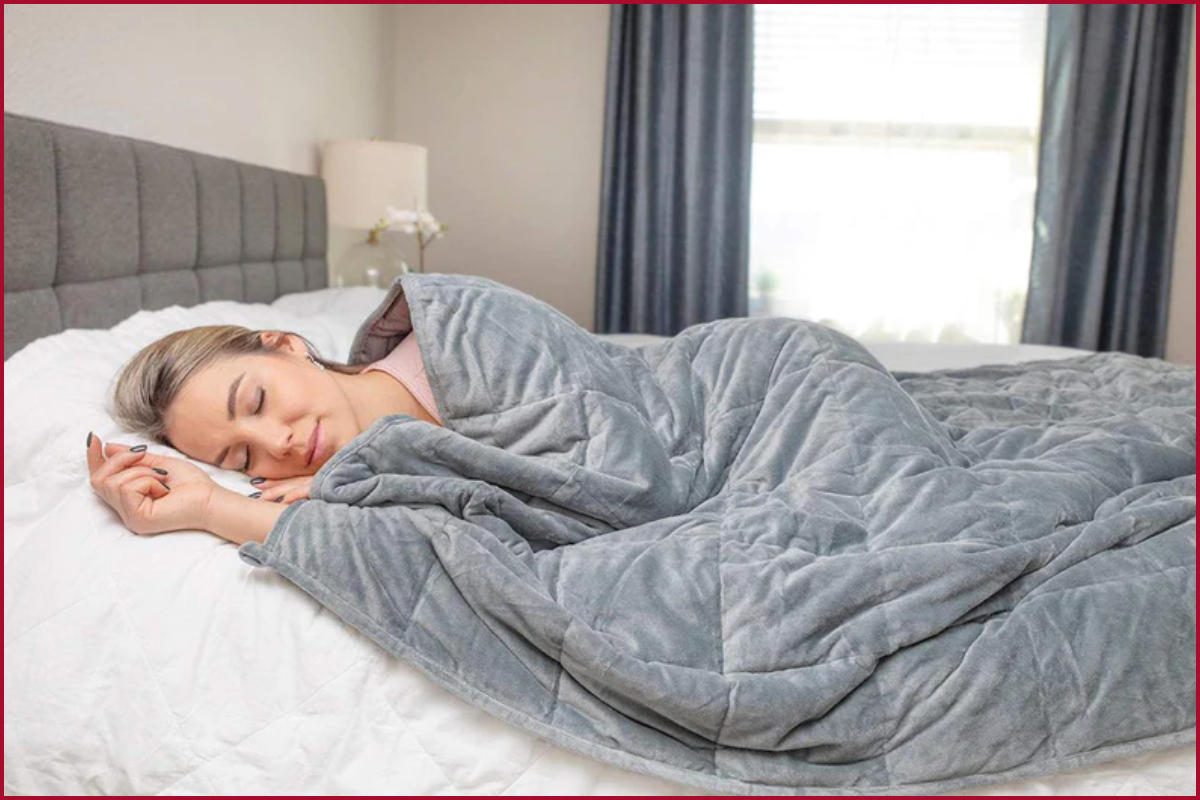
New Delhi: Most people opt for a ‘weighted blanket’ to relax and fall asleep. But what is a ‘weighted blanket’? It is a special heavy blanket that people wrap themselves to relax, feel more comfortable and sleep. Besides, it is said to relieve depressive symptoms, alleviate anxiety and improve sleep quality.
In the year 1997, the first weighted blanket was invented by Keith Zivalich, reported USA Today. He was inspired to create it when his daughter placed a Beanie Baby (a stuffed toy) on his shoulder. He felt that the stuffed toy was hugging him, and that’s when he came up with the idea to create a blanket that could induce the same feeling.
To create the blanket he used deep pressure touch stimulation therapy (DPTS). A weighted blanket is made of various fillers, including micro glass beads, sand, steel beads, pebbles, and grains.

To what extend do they work and make a difference?
It is said that scientifically, deep pressure stimulation with a weighted blanket help in reducing autonomic arousal, which enables in reduction of anxiety.
“It provides a calm-inducing amount of pressure on your body, similar to the feeling of being hugged or held. The pressure usually puts your autonomic nervous system into ‘rest’ mode and can often reduce symptoms of anxiety, such as fastened heart rate,” said Vinaya Gore, Chief Psychologist at Aatman Psychology Studio, Pune.
Aman Puri, Founder of Steadfast Nutrition stated that they are a good way to release stress and anxiety as they provide cosiness and reduce the feeling of loneliness, thus increasing the quality of sleep. “Moreover, when we enter into the deep sleep stage, the body temperature reduces and a weighted blanket would help in providing extra warmth. Sleep is the most important part of a person’s recovery and a good sleep cycle can improve hormonal functioning and cognitive strength. Many recent studies have shown the benefits of using weighted blankets,” stated Aman Puri.
Dr Rachna Khanna Singh, Mental Wellness Expert at Artemis Hospital stated that these specially-designed blankets can work complementary to treatment. “Research is still being done. It cannot replace treatment, but if it provides the person comfort, it can be used complementary to treatment,” she said.

However, according to experts, a weighted blanket may not be suitable for everyone. Gore explained that people who are suffering from conditions like chronic respiratory or circulatory issues, asthma, low blood pressure, sleep apnoea, or claustrophobia must avoid using it. Besides, the glass beads could also fall out and become a choking hazard, which can be risky.
As per the series of 8 studies done by the American Occupational Therapy Association suggest, “weighted blankets may be an appropriate therapeutic tool in reducing anxiety. However, there is not enough evidence to suggest they are helpful with insomnia.”




